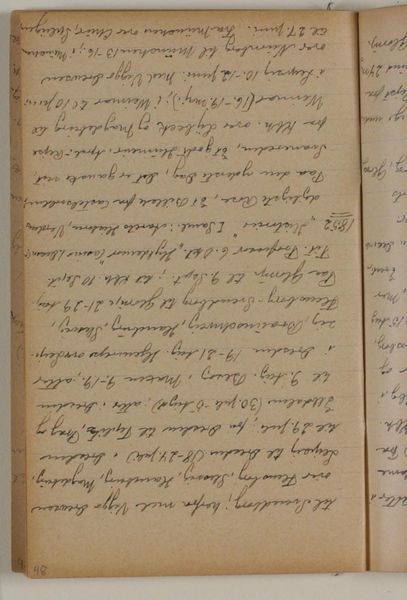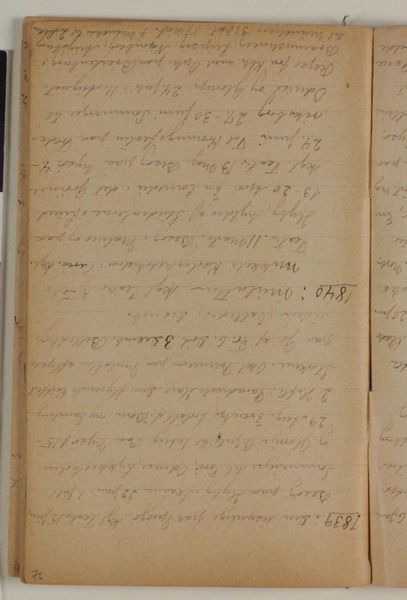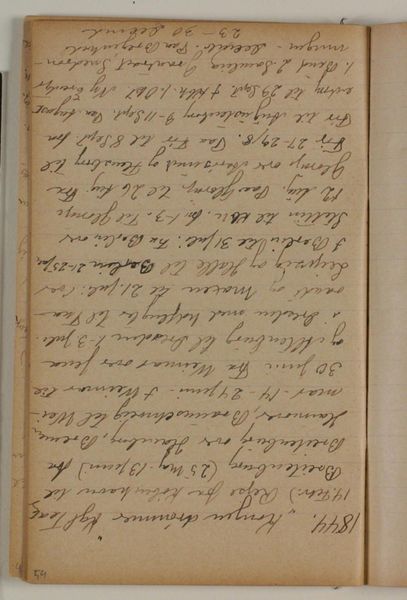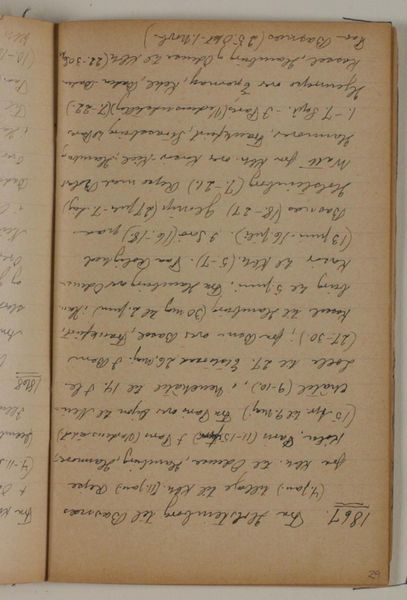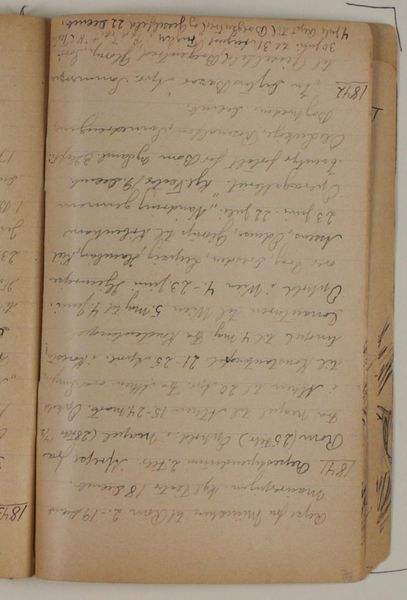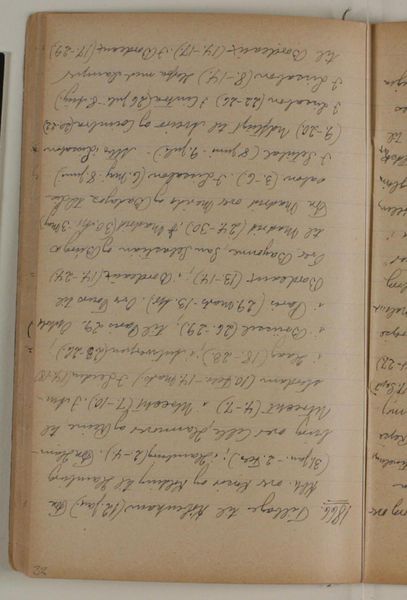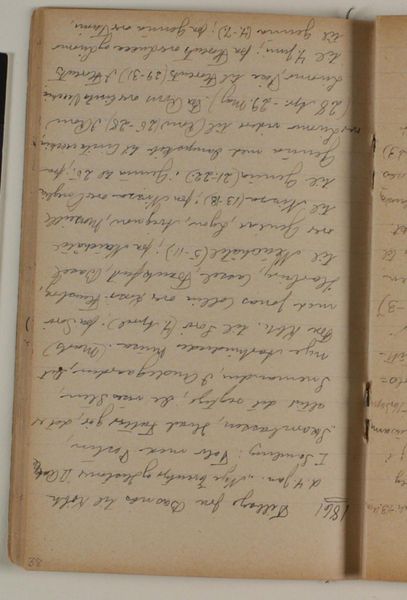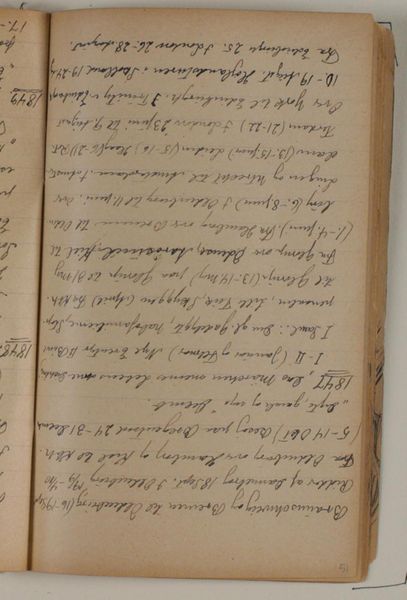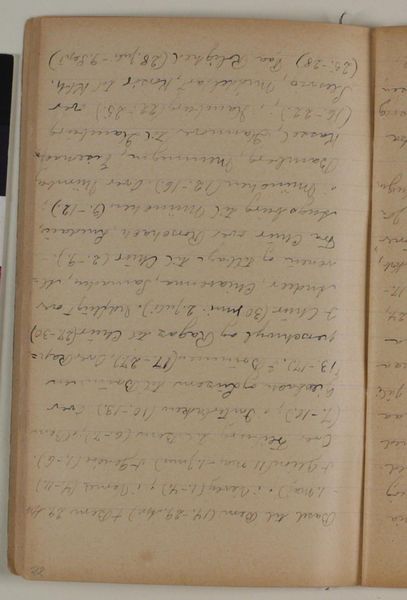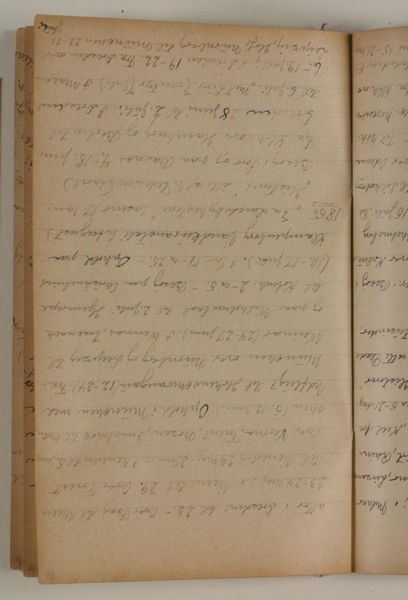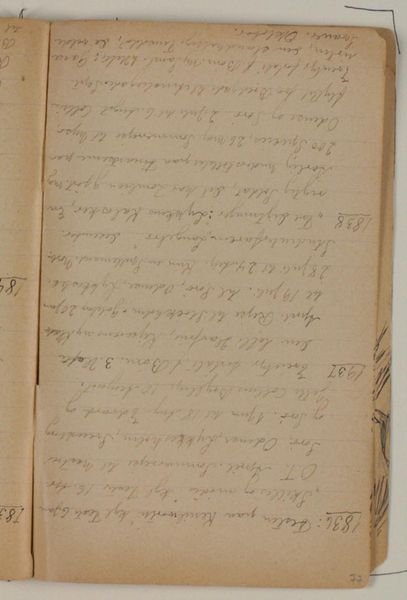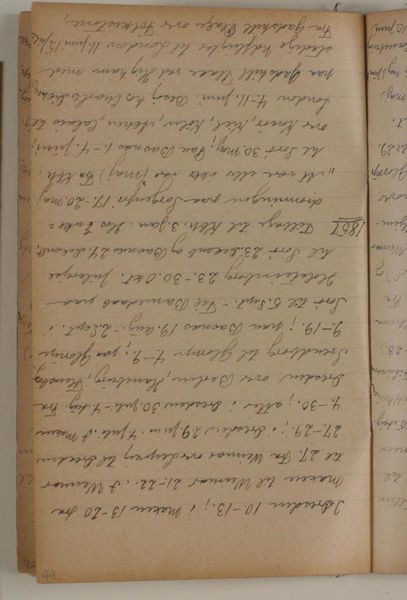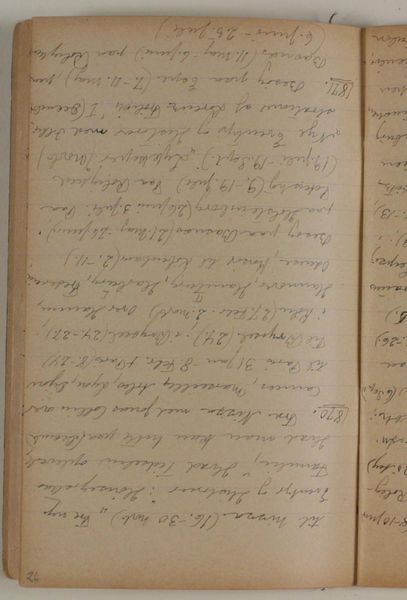
Tidstavle over H.C. Andersens liv 1866-1844 1930 - 1938
0:00
0:00
drawing, paper, ink, pencil
#
drawing
#
paper
#
ink
#
coloured pencil
#
pencil
Curator: Looking at this page, the writing itself strikes me as rhythmic, a dance across the paper. Editor: Yes, that's a fascinating initial response! We're currently observing a piece entitled "Tidstavle over H.C. Andersens liv 1866-1844," created between 1930 and 1938 by Niels Larsen Stevns. It’s currently held at the SMK, the National Gallery of Denmark. It's a drawing rendered with ink and pencil, and potentially coloured pencil, on paper. Curator: The use of multiple pencils adds subtle gradations, which is visually enticing, yet, is it solely a study of aesthetics or the structure? Editor: As I understand it, it is fundamentally rooted in social context, as this drawing presents a timeline from H.C. Andersen’s life from 1866-1844, providing commentary on his life’s historical events through dates and locations written. This invites reflection on his sense of identity as his travels have given impact on art itself. Curator: So, this act of documentation… mapping Andersen’s life...it serves as both chronicle and commentary? In structural terms, it also presents something else because of its use of layering of textual material, almost like a palimpsest… where past and present are interwoven. The timeline transforms into an act of remembrance through form and technique itself. Editor: Exactly. Stevns is using the materiality and structure to engage a deeply personal narrative and social history; he makes tangible abstract ideas surrounding belonging and placemaking through the travels, allowing others to see these travels through Andersen’s sense of social commentary. Curator: Considering Stevns’ choices, this is a re-engagement of visual information within a framework that highlights historical context as well as being its material form of textual information. Editor: Indeed. It makes us contemplate the intimate relationship between our lives, places, our personal past and the structures we live by in the world today.
Comments
No comments
Be the first to comment and join the conversation on the ultimate creative platform.
